Galway, Province of Connacht, Ireland 作者: 来源: 发布时间:2021-01-26
I. Population and Area
Population in 2016:79,934
Population in 2019:80.000
Population Density: 42 people per square km
Total Area: 20.93 sq miles
II. Natural Geography (Environment, resource and transportation)
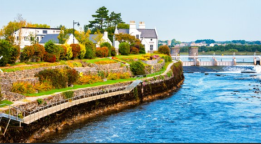
Galway is a city located in the West Region of the Republic of Ireland in the province of Connacht. This thriving harbor city is located on the Corrib near Galway Bay and it's completely surrounded by County Galway. Galway is the 4th largest city in the Republic of Ireland, and the 6th largest city on the island of Ireland.
County Galway lies along the west coast of Ireland. It is home to Ireland’s second largest lake, Lough Corrib (after Lough Neagh), and the famous Twelve Bens Mountain Range. It is one of Ireland’s least densely populated counties and as a result, offers fantastic support to a vibrant wildlife community.
Galway has an excellent natural resource in the form of ocean power off of its west coast, in Galway Bay. To take advantage of this clean, natural energy resource would make a major environmental and social contribution, and reduce Ireland’s carbon impact. Harnessing the energy from ocean activity will require a detailed understanding of the ocean’s behavior in this location, then subsequent commercial development to bring the energy onshore. To support this long-term vision, strategic infrastructure in the form of a subsea observatory was officially activated on July 1, 2016. The subsea observatory will conduct real-time analysis of ocean behavior to enhance Ireland’s understanding of the sea, the impact of weather and climate change, and how the sea reacts with man-made products underwater. This information is vital to accelerate marine research, environmental monitoring, aquaculture and fisheries, and alternative energy sources.
Transportation:
Galway City Council & Partners will continue to develop a transport vision for Galway where all element of transport will work together to achieve a sustainable solution. This vision recognises the issues to be address include: smarter mobility, public transport and a new river corrib crossing. The n6 Galway City Transport Project confirms that a river crossing is possible and plans are progressing on this. The City Council in partnership with the National Transport Authority is undertaking a review and consolidation of transport proposals for the city to form a coherent and integrated transport strategy – which is to be formulated as an 'Integrated Transport Management Programme' for Galway. This programme will inform the new Corrib crosssing and the N6 Galway City Transport Project will contribute to an integrated transport solution for Galway.
III. Economy
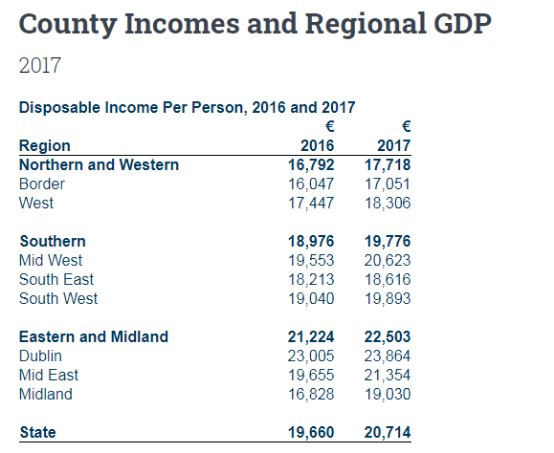
IV. Industrial Characteristics: (ICT Sector)
There are 196 ICT organisations in Galway.
Galway is home to 4 of the top 5 ICT companies – IBM, SAP, Oracle and Cisco.
There are 90 ICT organisations in Galway City, as categorised by NACE (Rev.2) Codes, with a further 106 ICT companies based in County Galway.
Growing indigenous SME ICT companies have real potential to grow a vibrant ICT cluster.
There are 2,229 science, research, engineering and technology professionals in Galway City and County in 2011.
There are 917 science, engineering and technology associate professionals in Galway City and County in 2011.
Some 72.8% of households in the Galway city region have broadband connectivity compared to 63.8% nationally.
Galway has a foothold in the growing cloud computing market through SMEs.
There is a significant research infrastructure in Galway City – INSIGHT at NUI Galway.
There is an array of ICT education provision and incubation support.
Download Galway Technology Map GALWAYTECHMAP
V. Attractions
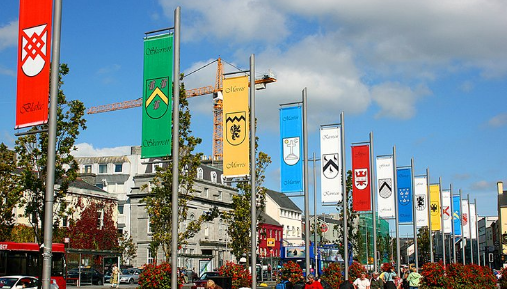
Beginning a tour of Galway at the historic Eyre Square makes perfect sense as it represents one of the most important gathering spots since medieval times. Also known as John F. Kennedy Memorial Park, after the US President of Irish descent, the square links the center of the city with a popular shopping area. This former home to food markets is a favorite of pedestrians. The public artwork takes tourists through several important eras of Irish history.
A dramatic rust-colored fountain sculpture represents Galway Hookers, traditional sailing vessels of the area. Visitors can almost feel the wind whipping at their sails. In addition, Brown's Gateway is built into a structure on the Northwest side. As the doorway to an old patrician mansion, it stands as a memorial to one of the original Tribes of Galway. There's a striking monument to the Irish language poet Pádraic O'Conaire (1882-1923), who is represented sitting on a rock.
West of Eyre Square there's a modern shopping center of the same name, which
has become a popular place to stroll and soak up Irish culture. Be sure to make your way to the atmospheric Shop Street (continues on from Williamsgate Street just off Eyre Square), which, weather permitting, is generally brimming with buskers, also known as avant-garde street performers.
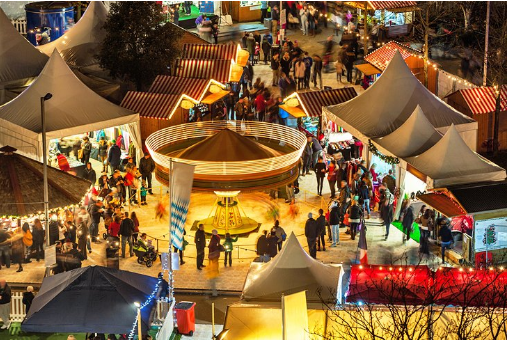
For some local flavor and a bit of a bohemian vibe, head to Galway Market, a favorite of both tourists and residents for produce, food, and crafts. Situated on Church Lane by St. Nicholas Church, this centuries-old, bustling venue has hundreds of stalls. Often you can get the chance to taste some of the delicious Galway seafood. Food vendors offer an assortment of flavors, and of course there are sweets for all.
Hours vary according to season; make sure to check their website before heading out. During the Christmas season, it is especially festive.
VI. History
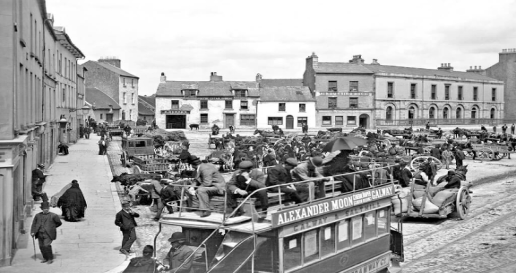
Galway is an old city, steeped in history with an interesting past. From medieval streets to modern thoroughfares, there is much to see and do in Galway as regards times passed.
Early Times
One of the earliest monuments is the Turoe Stone, near Loughrea. It is a granite stone featuring “La Tene” celtic art, and dates from c.200 B.C. This curvilinear art acts as a reminder of Ireland’s Celtic past when the La Tene Celts came from Switzerland to Ireland and brought with them language, writing, folklore and music.
Ireland was celebrated as the Land of Saints and Scholars from the 5th to the 10th century, and Galway was no exception. Some of the Christian Saints in Galway included Saint Enda in Inishmore, St Columcille, St Feichin in Cong, St. Rock in Little Killary, and Saint Sourney in Inishmore.
City Origins
Galway, “The City of the Tribes”, was originally founded as a fishing village in the area close to the Spanish Arch, where the Corrib River flows into beautiful Galway Bay. The Normans came to Ireland in 1169 and began to occupy Connacht in the early 12th century.
By the year 1232 it was held by the Anglo Normans under Richard de Burgo, but constant flying raids by the various Clans in the region brought about the need to build defensive walls. The work was commenced and it was an immense task given the small population of the town and the tools of the period. By 1270 much of the walls were in place including the Spanish Arch itself, and the town began to grow and prosper. A charter was granted in 1396 by Richard II which transferred governing powers to 14 merchant families, known locally as the 14 tribes of Galway. Each of the 14 tribes maintained a quasi-independence, while still retaining respectful links to the British crown. Galway City is now known and “City of The Tribes”, and the names of these fourteen tribes are now represented on roundabouts in Galway City.
Turbulent Times
However, elsewhere in the county, battles raged. The Battle of Aughrim was fought on the 12th of July, 1691 and was the last great land battle in Ireland. It involved the Williamite and Jacobite armies, and the result of the battle changed the course of Irish history. The Williamites were victorious, but the human casualties were high. It is estimated that 9,000 soldiers lost their lives on that fateful day, making it one of the bloodiest battles in Ireland’s history.
Landed Estates
The 18th century in Galway was more peaceful, with upper class, landowning Protestants starting to build Big Houses and Demenses in the county instead of defensive castles. Traces of this can be found throughout County Galway – Aughnanure Castle is a fine example of a 15th century tower house, while Portumna Castle is a wonderful example of a 17th century fortified house built by local landowners, the Clanricarde Burkes. However these were times of great inequality where Galway, like many other counties in Connacht, was ravaged by the Great Famine of 1845 which saw thousands die, and thousands more emigrate.
Trade Links
Galway’s strategic coastal location and natural harbour caused successful trading links to be built up with both Portugal and Spain, and the city prospered for many centuries. Cromwell, however, arrived in 1651 and the region entered a long period of decline. Other prominent sea ports emerged on the east coast, namely Dublin and Waterford, and trade with Spain came to an end. Many years would pass before Galway would again enjoy such prosperity, but the legacy of the city’s long and colourful history is still evident in the character and style of the city’s building stock.
VII. Other information
Galway is the third largest city in the Republic of Ireland and the only city in the province of Connacht. According to the 2011 census, the population of Galway is 75,414.
The park at the center of Galway City is officially called John F. Kennedy Park. However, it is still known by most Irish people as Eyre Square. It was renamed John F. Kennedy Park in the 1970s after the visit of Ireland's favorite US President (sorry, Obama!). The square is home to the old city gates and its defending cannon.
Galway is nicknamed “The City of Tribes” (“Cathair na dTreabh”) after the fourteen merchant families who led the city during the Hiberno-Norman period.
The city is known for its vibrant lifestyle and numerous festivals, celebrations and events including the summer’s Galway Arts Festival which is known for its famous Macnas (the arts group) parade.
There are many symbols associated with Galway. These include the Claddagh Ring, Galway's own symbol of love and friendship, worn the world over; the Aran Sweater, an emblem, not only of the Aran Islands, but of Ireland itself; and the Galway Hookers, ships that distinguish themselves as Galway’s signature upon the water.
VIII. Contact information
Mayor: Mike Cubbard (Ind)
Galway City Council,
City Hall, College Road,
Galway, H91 X4K8.
Email: customerservice@galwaycity.ie
Email for Irish Queries: gaeilge@galwaycity.ie
Phone: +353 91 536400
Fax: +353 91 567493
